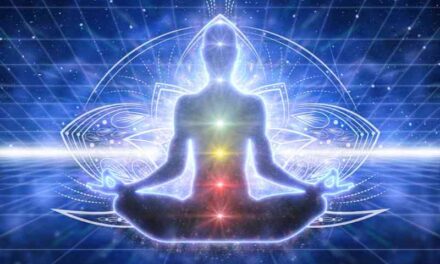A questioner asks Maharaj whether witness consciousness is permanent, and he replies that it is not. The knower and the known both arise and set, but the thing in which they arise and the set are beyond time and cannot be described as permanent or eternal. The questioner then asks about sleep and what keeps the body sensitive and receptive, to which Maharaj replies that the knower is always present, but there is just an absence of experience. In the same way, in death, the knower disappears with the body, but life and consciousness remain.
The sense of separate existence is a reflection in a separate body of the one reality, and the purpose of Yoga is to undo this confusion. To find out what is deathless, one must keep their mind and heart on it with interest and steady remembrance. Qualifications and opportunities will come with earnestness, and the most important thing is to be free from contradictions and maintain tenacity of purpose and honesty in pursuit. All blessings come from within, and the simplest way to find the deathless is to be with the sense of ‘I’ as much as possible.
The topic of consciousness and death has been a subject of inquiry for philosophers and spiritual leaders for centuries. In the above conversation between a questioner and Maharaj, a spiritual master, we gain insight into some of the fundamental questions about life, death, and the nature of consciousness.
The questioner first asks about witness consciousness, whether it is permanent or not. Maharaj responds by saying that it is not permanent. The knower and the known both arise and set, but there is something beyond the time in which they arise and set. Maharaj asserts that the words permanent or eternal do not apply to this state. This insight challenges our understanding of reality, as we typically believe that everything is impermanent except for some sort of eternal soul or essence.
The questioner then asks about sleep, and what keeps the body sensitive and receptive. Maharaj explains that the knower is always present, but there is just an absence of experience. In the same way, in death, the knower disappears with the body, but life and consciousness remain. This suggests that consciousness is not tied to a specific body or mind, but rather exists beyond them.
Maharaj then introduces the concept of the memory body or causal body, which is a record of all that was thought, wanted, and done. This memory body serves as a causal link between successive body-minds, suggesting that our actions and thoughts leave an imprint that influences our future incarnations. This insight challenges our belief that we are born with a blank slate and are only influenced by our environment.
The questioner then asks about the sense of a separate existence, to which Maharaj responds that it is a reflection in a separate body of one reality. This reflection creates the illusion that the unlimited and the limited are the same, which leads to confusion and suffering. Maharaj suggests that the purpose of Yoga is to undo this confusion and realize our true nature.
The conversation then shifts to the topic of death. Maharaj explains that in death, only the body dies, while life, consciousness, and reality do not. He suggests that life is never as alive as after death, which challenges our typical perception of death as the end of life. Maharaj also asserts that what was born must die, but the unborn is deathless. This suggests that there is something within us that transcends birth and death and is eternal.
The questioner then asks about the process of finding out what is deathless. Maharaj suggests that the first step is to keep our mind and heart on it with interest and steady remembrance. He asserts that all qualifications and opportunities will come with earnestness and that the most important thing is to be free from contradictions and maintain tenacity of purpose and honesty in pursuit. Maharaj suggests that all blessings come from within and that the simplest way to find the deathless is to be with the sense of ‘I’ as much as possible.
In this conversation, we gain insight into some of the fundamental questions about life, death, and consciousness. Maharaj challenges our typical perceptions and beliefs, suggesting that there is something beyond the impermanent world that we experience. He suggests that consciousness is not tied to a specific body or mind and that our actions and thoughts leave an imprint that influences our future incarnations. He also suggests that the purpose of Yoga is to undo the confusion that leads to suffering and realize our true nature.
This conversation invites us to question our own beliefs and perceptions about life, death, and consciousness. It challenges us to look beyond the impermanent world and consider the possibility that there is something more. It also suggests that our actions and thoughts have consequences that extend beyond our current life and that our ultimate goal should be to realize our true nature and transcend the limitations of the ego.





